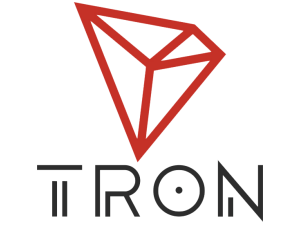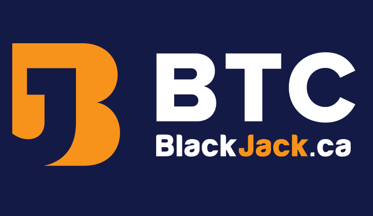Tron Casinos – Learn How to Trade and Play Casino Games with TRX

Every top-tier crypto currency has a unique purpose. Bitcoin, Ethereum, Litecoin, Tether, CasinoCoin – they were all built to perform a specific task, in a specific way, different from each other. The Tron blockchain, and its native Tronix [TRX] token, are no different. Tron was built to provide a digital financing mechanism for traders of digital content; eBooks, reports, movies, music, media files, etc.
Tronix – better known by its colloquial blockchain name, Tron – isn’t among to the Top 10, or even the Top 20, in terms of crypto market capitalization. We’ve chosen to include it here because the vast majority of the network’s activity revolves around entertainment applications. One such entertainment application is the online gambling community. While not the most widely accepted crypto currency at online casinos, TRX is easily earning its place in the market.
Although it hasn’t been around nearly as long as Bitcoin, Tron’s value has been known to rise and fall with the cryptographic tide. Just a few months after its launch, TRX experienced a massive spike, jumping from its original price of about US$0.002 in September 2017, to $0.30 in January 2018. It didn’t last, of course, but since then, the pendulum has had its multitude of swings. As such, TRX is a relatively popular crypto for investors; especially those who appreciate ‘penny stocks’.
In the following guide, we’ll teach you everything you need to know to buy, sell, trade, barter, and yes, even play online casino games with TRX crypto. We’ll kick things off with a quick chronicle of Tron’s background.
History of Tron – The Crypto for Digital Content Movers
The story of Tron, and its native Tronix crypto currency, dates back to its founding in September of 2017. Its creator, Justin Sun, established the Tron Foundation in Singapore, raising US$70 million through an initial coin offering. It was a very interesting time in the chronology of crypto currencies. Tron launched just before China plugged the final hole in its prohibition against digital tokens. However, due to its unique concept, Tron was able to survive, and even thrive in its primary Asian market.
Tron’s developmental progression was swift. March 2018 saw the launch of the Blockchain Explorer Testnet and Web Wallet. Two months later, the Tron Mainnet, Odyssey 2.0, launched. Then in June, Tron made the transition to ERC-20 token protocol, establishing itself as an independent P2P network operating on Ethereum protocol. To further its position as a digital content payment network, Tron acquired the P2P file sharing service, BitTorrent, in July 2018. By January 2019, Tron was boasting a market cap of US$1.6 billion.
Tron’s potential is prolific, to put it mildly. Its creation was a blatant challenge of the entire media industry, defying the corporate middleman (Netflix, Amazon, Spotify, etc.) Its concept, to connect the public with the creators of media, gives consumers direct access to wholesale markets. No longer would consumers have to pay retail prices. However, as you might imagine, the company’s goal (and motto) to “Decentralize the Web” soon came under fire.
Criticism from Crypto Developers
Tron’s success did not come without negative appraisal from the crypto development community. It’s not that the system does not work. It’s not that it lacks transparency. These and other common complaints among today’s more questionable tokens did not apply. The problem is that some developers feel Tron’s technology was not their own; that the foundation was not theirs to build upon. Most altcoins do come from the design of an existing platform. But it’s been said that Tron’s builders have “gone too far” in appropriating the mechanics for its platform.
Structurally speaking, Tron is very similar to the Ethereum framework. It uses many of the same foundational building blocks, from the mimicry of its digital tokens and smart contracts, to its decentralized applications (dApps). It has all the same parameters, but at a remarkably lower cost per transaction. This particular quality pits Tron versus Ethereum in direct competition for the crypto trading business.
In June 2021, less than a month after the appearance of USDC crypto on the Tron network, the stablecoin was circulating at more than 108 million.
“This could be another sign that crypto traders are increasingly turning to blockchains that provide cheaper transaction fees with faster speed than what’s found on Ethereum.”
Muyao Shen, Coindesk
Criticism or not, Tron has found ultimate success over the years. At time of writing, it is the 29th largest traded crypto currency in terms of market capitalization, with a cap of just over US$7 billion and an average 24/hr volume of $1.22 billion.
How to Acquire TRX Crypto
There are several ways you can pack TRX into your digital wallet. You can purchase it from an exchange service. Or, if you have a powerful enough computer with an adequate GPU system, you can mine for it yourself. If you create digital content, you can sell it for TRX; (as was the network’s original intention). Before you do any of this, you first need a wallet to store it in.
Compatible Tronix Wallets
There are a number of compatible wallets developed directly by the Tron community, as well as a variety of universal crypto wallets that can hold Tron and any other ERC-20 (Ethereum-based) tokens.
If you’re looking to move your tokens regularly, such as for the purpose of gambling at crypto casinos, a software wallet for desktop or mobile devices is your best bet. Some reliable options include TronLink, imToken, and Trust Wallet.
If you’re investing for the long term, and intend to deal in large sums of TRX, you may be better off storing them on a cold storage hardware wallet. Cold wallets such as Ledger or Trezor are perfect for this.
Buying TRX on a Crypto Exchange
As one of the world’s top-trading crypto currencies, you can bet your bottom Bitcoin that all the major CEX and DEX trading platforms carry Tronix. That’s great news for TRX traders. It gives them the opportunity to be extremely picky when choosing where to buy it from. Different exchanges come with variable qualities to consider; cost, speed, efficiency, features, functionality, accessibility, anonymity, etc.
We tend to do the majority of our crypto trading on the Binance Exchange. It’s very cheap, highly secure, and deals in the widest variety of cryptos. It’s also readily available to Canadians. However, we encourage due diligence in all of our readers. Do your research and pick the exchange that works best for you.
How to Mine for TRX
Because Tronix runs on a proof-of-stake protocol (as opposed to proof-of-work), you can’t mine TRX directly, but you can mine for TRX. You can do this by setting up a GPU crypto miner, such as the Claymore Dual Miner, to mine for Ethereum within a ETH->TRX mining pool, such as Tron-mining.com. The pool collectively mines for Ethereum blocks, then exchanges them for Tron to reward its miners.
Can I Buy TRX from a Bitcoin ATM in Canada
Unfortunately no, there are no known Bitcoin ATMs currently selling Tronix [TRX] in Canada. If that changes, we’ll be sure to let you know. Just in case our editors fall behind, you can always check for yourself here.
Is Tron Anonymous?
Like almost every other crypto currency on the market today, Tron is about 99.9% anonymous. To the average user, there’s no way to tell who’s sending or receiving TRX transfers on the blockchain. It looks like nothing more than an unintelligible strain of alphanumeric code. However, to the trained eye – to that 0.01% of identity seekers – it may be possible to trace a transaction back to its source. Whether your transactions are truly anonymous depends entirely on whether your wallet ID is connected to anything that can identify you personally.
All transactions are recorded on a public ledger. Anyone can view the ledger. But this ledger only reveals your wallet ID, and the wallet ID that the TRX transferred to/from. If you bought TRX from a public exchange, funded with a debit card or bank account, then you’ve created a link back to your personal identity. If you leave no clues behind, no bread crumbs to trace, then yes, Tron can be entirely anonymous.
Sometimes, we leave bread crumbs behind without even realizing it. If the right person really wants to know who sent what, and has the knowledge and equipment to run a trace, they just may pinpoint that wallet ID back to an IP address. This could lead to a physical address, and perhaps to an exact identity. Thus, we can only assume Tron to be 99.9% anonymous, at best.
The point is, if you need your transactions to be 100% anonymous to avoid the prying eyes of, say, the taxman or some other government agent, Tron may not be the crypto for you. We’d recommend looking into a truly private crypto, such as Monero (XMR) or Verge (XVG).
Gambling with TRX at Tron Crypto Casinos
Tron can be used to do a lot of things over the world wide web, and gambling at online casinos is high on that list. Its proof-of-stake (as opposed to proof-of-work) algorithm makes it the perfect medium for ‘staking’ on casino games like blackjack and poker.
The only downside to gambling with Tron is that there aren’t a whole lot of Canadian-facing casinos that accept it – at least, not yet. The market is growing steadily, though, especially in the Great White North, where crypto currencies and online gambling are both perfectly legal. At time of writing, we’ve found that approximately 25% of reputable crypto casinos accept TRX and Canada players.
